Motor Vehicles
Rolls Royce Gift Card
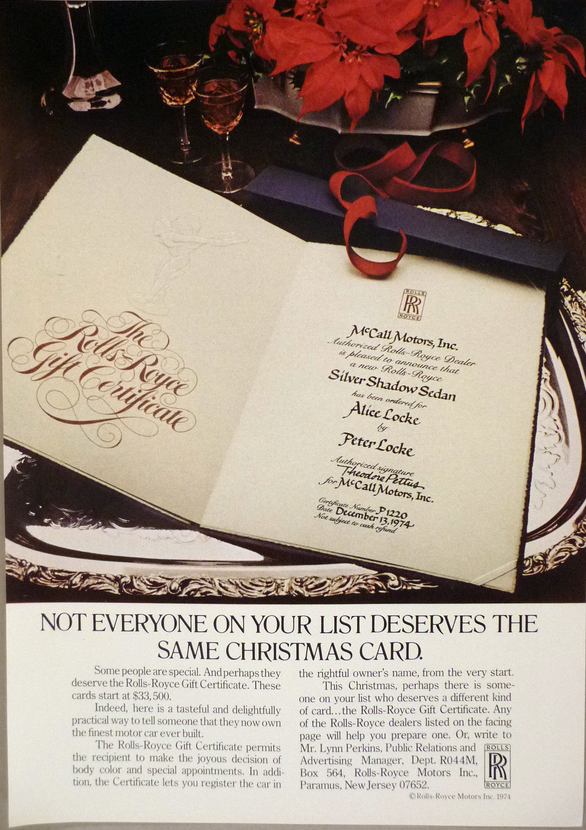
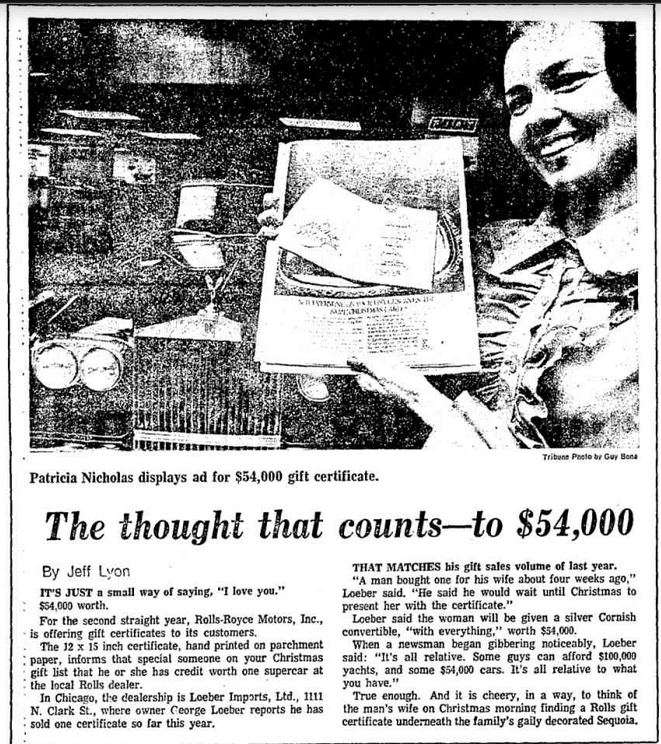
Source of story.
Apparently still a thing these days, but in digital format.
Posted By: Paul - Sat Jul 15, 2017 -
Comments (2)
Category: Gifts, Presents, Tributes, and Other Honoraria, Motor Vehicles
The Wildflower State
Texas license plates currently display the slogan "The Lone Star State." But before that became the license plate motto, state residents had to fight off a number of attempts to display slogans that weren't quite as manly.In 1985, Texas highway commissioners voted to display "The Wildflower State" on Texas tags. The phrase would have been printed over a faint outline of a bluebonnet. The idea prompted 57 state lawmakers to sign a letter of protest. Critics complained that the slogan "dealt a blow to the Texas mystique." So the commissioners backed down.
Then, in 1989, the commissioners wanted to display "The Friendship State" on plates. After all, the state motto is "Friendship." But again, popular protests complained that the phrase was "too wimpy."
It was only in 1992 that the commissioners finally gave in to popular demands and started printing "The Lone Star State" on plates.
If you're interested in the history of Texas license plates, Wikipedia has a list of their design by year.
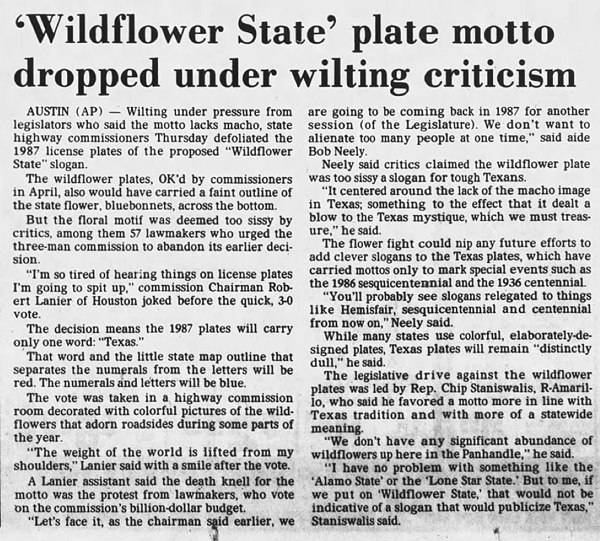
Longview News Journal - July 26, 1985
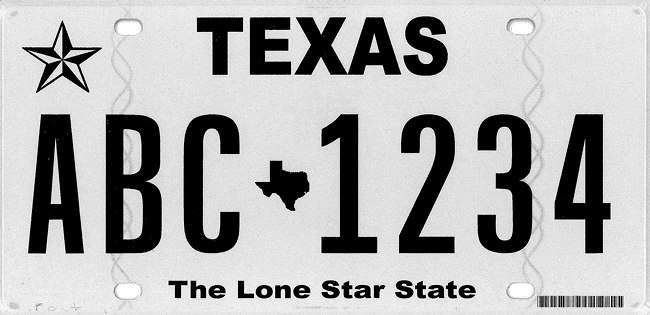
Posted By: Alex - Fri Jun 23, 2017 -
Comments (3)
Category: Government, Motor Vehicles
Anti-Safety Device
It's a combo seat-buckle alarm stopper and bottler opener. So that you can crack open a cold one when you get in the car, and then drive seat-belt free. You can find tons of them for sale on eBay, where they go for as little as 74 cents each.They should give these away as a freebie when you buy a cellphone to make it a trifecta of unsafe driving.

Posted By: Alex - Tue May 30, 2017 -
Comments (4)
Category: Motor Vehicles, Cars
Horn OK Please
Atlas Obscura does a great job explaining the wacky phrase from India, "Horn OK Please." But they do not place the video of the song that uses the same title upfront enough for my tastes!
Posted By: Paul - Tue May 23, 2017 -
Comments (1)
Category: Languages, Slang, Motor Vehicles, India
The Drivometer
A device for simulating driving, and measuring the skill of drivers, which was developed at Iowa State's Driving Research Laboratory in the 1930s.
A description of what it felt like to operate the thing. It sounds like it would have made a good arcade game. From The Dalles Chronicle - Aug 21, 1936:
Update: I think the top picture shows the 2nd version of the Driveometer, developed in the 1950s. The original version, from the 1930s, is below.

Wausau Daily Herald - Oct 26, 1937
Posted By: Alex - Tue May 09, 2017 -
Comments (4)
Category: Motor Vehicles, Cars, Science, 1930s
The Rhino
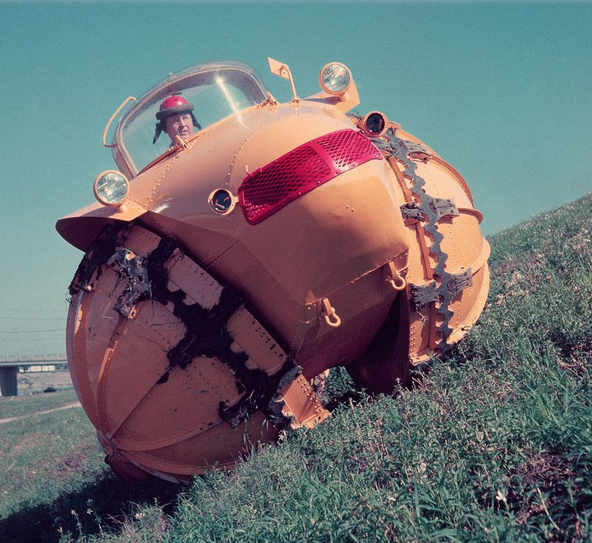
More info here.
1954 coverage here.
Posted By: Paul - Thu May 04, 2017 -
Comments (0)
Category: Inventions, Motor Vehicles, 1950s
Chicago General Motors Powerama
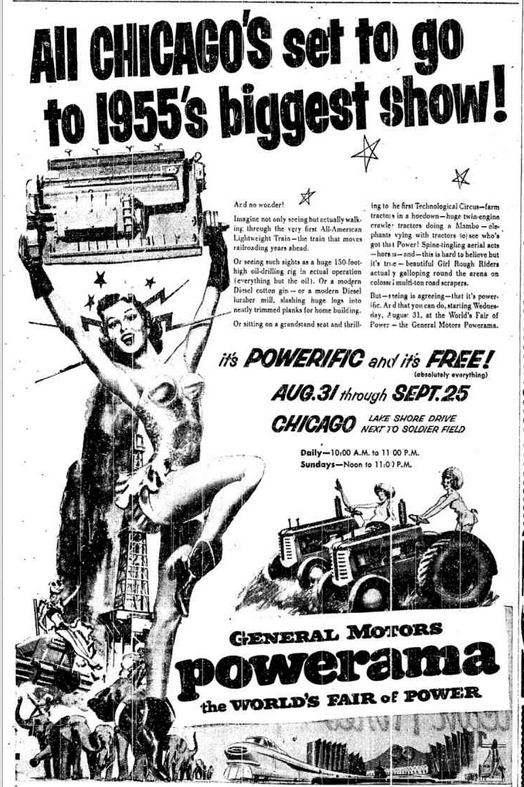
Posted By: Paul - Tue Apr 25, 2017 -
Comments (0)
Category: Fairs, Amusement Parks, and Resorts, Motor Vehicles, 1950s
Wild Ones on Wheels
Wild Ones On Wheels (1962) - Feature (Crime... by filmgorillas
Posted By: Paul - Sun Apr 23, 2017 -
Comments (1)
Category: Clubs, Fraternities and Other Self-selecting Organizations, Motor Vehicles, Movies, Juvenile Delinquency, Bohemians, Beatniks, Hippies and Slackers, 1960s
Star Wars Celica GT
Back in 1977, as a stunt to help promote the opening of Star Wars, Toyota created a custom Star Wars Celica GT. Then they raffled off the car. Somebody won it, but nobody knows who. The fate of this car has become something of an obsession among fans of the movie. Was it destroyed? Is it still sitting in a garage somewhere? The mystery endures...More info: SpeedHero, jalopnik


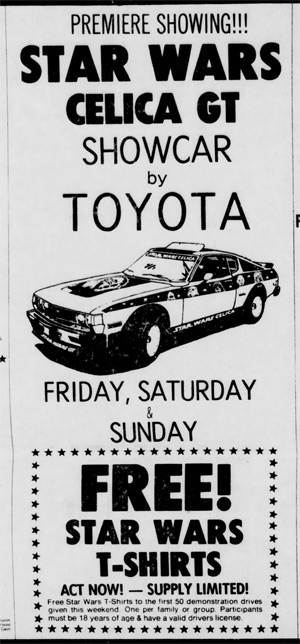
Santa Ana Register - Oct 8, 1977
Posted By: Alex - Thu Mar 23, 2017 -
Comments (2)
Category: Motor Vehicles, Cars, Movies, 1970s
Brake Reaction Time
In the mid 1930s, Dr. Harry DeSilva of the Massachusetts State College at Amherst created a brake reaction test to measure how quickly drivers can step on the brake in response to a red light. He took it around the country and tested thousands of people.People in their mid 20s generally had the quickest reaction times, and then times declined with age, which wasn't a surprise. Slightly more surprising was that short people generally had faster responses than tall people. From Time magazine (Aug 1935):

Time - Aug 26, 1935

Democrat and Chronicle - Mar 15, 1936
Posted By: Alex - Fri Mar 17, 2017 -
Comments (4)
Category: Motor Vehicles, Cars, Psychology, 1930s

| Who We Are |
|---|
| Alex Boese Alex is the creator and curator of the Museum of Hoaxes. He's also the author of various weird, non-fiction, science-themed books such as Elephants on Acid and Psychedelic Apes. Paul Di Filippo Paul has been paid to put weird ideas into fictional form for over thirty years, in his career as a noted science fiction writer. He has recently begun blogging on many curious topics with three fellow writers at The Inferior 4+1. Contact Us |




